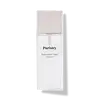What's inside
What's inside
 Key Ingredients
Key Ingredients

 Benefits
Benefits

 Concerns
Concerns

 Ingredients Side-by-side
Ingredients Side-by-side

Aloe Barbadensis Leaf Juice
Skin ConditioningRosa Damascena Flower Water
MaskingSalvia Officinalis Water
Skin ConditioningGlycerin
HumectantCalanthe Discolor Extract
Skin ConditioningCitrus Aurantium Dulcis Callus Culture Extract
Skin ConditioningRhododendron Ferrugineum Leaf Cell Culture Extract
Skin ConditioningVaccinium Vitis-Idaea Fruit Extract
AntioxidantChenopodium Quinoa Seed Extract
Skin ConditioningNiacinamide
SmoothingCeramide As
Skin ConditioningPolyglutamic Acid
Skin ConditioningSodium Hyaluronate
HumectantChondrus Crispus Extract
Skin ConditioningSqualane
EmollientRaspberry Ketone
MaskingTocopherol
AntioxidantPelargonium Graveolens Oil
MaskingRosa Damascena Flower Oil
MaskingCitrus Aurantium Bergamia Fruit Oil
MaskingLavandula Angustifolia Flower Oil
MaskingPotassium Sorbate
PreservativeSodium Benzoate
MaskingCitric Acid
BufferingAloe Barbadensis Leaf Juice, Rosa Damascena Flower Water, Salvia Officinalis Water, Glycerin, Calanthe Discolor Extract, Citrus Aurantium Dulcis Callus Culture Extract, Rhododendron Ferrugineum Leaf Cell Culture Extract, Vaccinium Vitis-Idaea Fruit Extract, Chenopodium Quinoa Seed Extract, Niacinamide, Ceramide As, Polyglutamic Acid, Sodium Hyaluronate, Chondrus Crispus Extract, Squalane, Raspberry Ketone, Tocopherol, Pelargonium Graveolens Oil, Rosa Damascena Flower Oil, Citrus Aurantium Bergamia Fruit Oil, Lavandula Angustifolia Flower Oil, Potassium Sorbate, Sodium Benzoate, Citric Acid
Ingredients Explained
These ingredients are found in both products.
Ingredients higher up in an ingredient list are typically present in a larger amount.
Glycerin is already naturally found in your skin. It helps moisturize and protect your skin.
A study from 2016 found glycerin to be more effective as a humectant than AHAs and hyaluronic acid.
As a humectant, it helps the skin stay hydrated by pulling moisture to your skin. The low molecular weight of glycerin allows it to pull moisture into the deeper layers of your skin.
Hydrated skin improves your skin barrier; Your skin barrier helps protect against irritants and bacteria.
Glycerin has also been found to have antimicrobial and antiviral properties. Due to these properties, glycerin is often used in wound and burn treatments.
In cosmetics, glycerin is usually derived from plants such as soybean or palm. However, it can also be sourced from animals, such as tallow or animal fat.
This ingredient is organic, colorless, odorless, and non-toxic.
Glycerin is the name for this ingredient in American English. British English uses Glycerol/Glycerine.
Learn more about GlycerinNiacinamide is a multitasking form of vitamin B3 that strengthens the skin barrier, reduces pores and dark spots, regulates oil, and improves signs of aging.
And the best part? It's gentle and well-tolerated by most skin types, including sensitive and reactive skin.
You might have heard of "niacin flush", or the reddening of skin that causes itchiness. Niacinamide has not been found to cause this.
In very rare cases, some individuals may not be able to tolerate niacinamide at all or experience an allergic reaction to it.
If you are experiencing flaking, irritation, and dryness with this ingredient, be sure to double check all your products as this ingredient can be found in all categories of skincare.
When incorporating niacinamide into your routine, look out for concentration amounts. Typically, 5% niacinamide provides benefits such as fading dark spots. However, if you have sensitive skin, it is better to begin with a smaller concentration.
When you apply niacinamide to your skin, your body converts it into nicotinamide adenine dinucleotide (NAD). NAD is an essential coenzyme that is already found in your cells as "fuel" and powers countless biological processes.
In your skin, NAD helps repair cell damage, produce new healthy cells, support collagen production, strengthen the skin barrier, and fight environmental stressors (like UV and pollution).
Our natural NAD levels start to decline with age, leading to slower skin repair, visible aging, and a weaker skin barrier. By providing your skin niacinamide, you're recharging your skin's NAD levels. This leads to stronger, healthier, and younger looking skin.
Another name for vitamin B3 is nicotinamide. This vitamin is water-soluble and our bodies don't store it. We obtain Vitamin B3 from either food or skincare. Meat, fish, wheat, yeast, and leafy greens contain vitamin B3.
The type of niacinamide used in skincare is synthetically created.
Learn more about NiacinamideRosa Damascena Flower Water comes from the Damask rose. It is a dilluted version of the Rose Essential oil.
The Damask Roses' petals have antioxidant, antimicrobial, and fragrance compounds. Though antioxidants are great for soothing skin, the fragrance compounds can irritate it.
Sodium Hyaluronate is hyaluronic acid's salt form. It is commonly derived from the sodium salt of hyaluronic acid.
Like hyaluronic acid, it is great at holding water and acts as a humectant. This makes it a great skin hydrating ingredient.
Sodium Hyaluronate is naturally occurring in our bodies and is mostly found in eye fluid and joints.
These are some other common types of Hyaluronic Acid:
Learn more about Sodium Hyaluronate